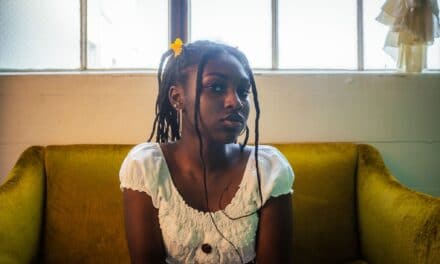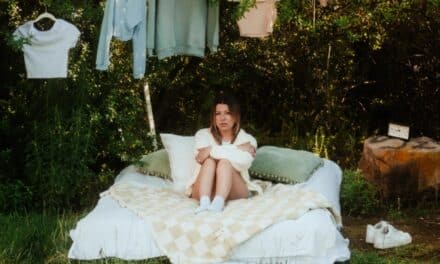In a landscape overflowing with singles engineered for the algorithm, Utrecht-based producer Corren Cavini dares to take the opposite route: he presents an album—a real one. A Place To Call Home, out now via Purified Records in both digital format and a hand-numbered, limited vinyl run of just 100 copies, isn’t a playlist of tracks but a lived-in world. A confession. A memory box. A map of how someone rebuilds themselves when “home” suddenly shifts beneath their feet.
The album’s origins couldn’t be more intimate. Its opening piece, “Home (ouverture)”, was composed on the day Cavini learned his mother had been diagnosed with cancer. After receiving the news, after the tears and the shock, he sat at the piano—and the first notes of the album emerged almost instinctively. That singular moment of grief became the nucleus of the project, setting the emotional temperature for everything that followed.
What unfolds across the record is a precise and patient excavation of identity, safety, and resilience. Cavini has long been known among electronic music devotees for his understated craftsmanship and warm, human touch—but here, he reaches a new level of emotional clarity. A Place To Call Home is not club music as escapism; it’s club music as refuge.
Fragments Become a Story
Over the past year, Cavini has been quietly revealing pieces of this universe through singles like “Tell Me” and “Heart Of Gold” featuring Chris Howard, “Free Falling” with MYRN, “Agoraphobia”, and “Listen To The Silence.” Taken individually, they hint at Cavini’s melodic sensitivity and cinematic instincts. Taken together, within the album’s narrative arc, they become something bigger—a journey rather than a collection.
Tracks like “Valinhos”, inspired by his travels in Brazil, and “Autumn Sun” bathe the listener in warmth, nostalgia, and an almost tactile sense of introspection. Meanwhile, collaborations with Dan Soleil on “Never The Same” and “Now Or Never” explore urgency, impermanence, and the emotional friction between holding on and letting go.
The record lives in dualities—fragile yet powerful, quiet yet expansive, personal yet communal.
Reframing the Dancefloor
One of the album’s emotional centerpieces, “Agoraphobia,” pays tribute to Pleinvrees, the influential Dutch festival series that disappeared in 2024. For Cavini, Pleinvrees was a sanctuary: the place where he first felt seen, first felt safe, first felt part of something larger than himself.
Instead of treating agoraphobia as fear of the crowd, Cavini reframes it as the longing for connection within it—a beautifully empathetic redefinition. In his world, the dancefloor is not chaos but community; not just nightlife, but a place where identity is reclaimed.
That idea resurfaces on “Your Rights,” a gentle but firm reminder that club culture remains essential for countless people seeking expression, safety, and belonging.
“If I can help even one person feel at home…”
Cavini articulates the album’s core purpose in a rare and vulnerable reflection:
“A Place To Call Home is about the importance of having somewhere you truly feel at home.
I’m more than aware of the struggle of not feeling safe, and in darker times, music and dance floors have helped me in that sense.
If I can contribute, even in the tiniest way, to helping others feel at home, connected, and safe through music—then that’s worth dedicating all of my energy to.”
In an era where electronic music often prioritizes immediacy, Cavini opts for intentionality. You can hear his classical training in the album’s structure, its dynamics, the way silence and stillness play as important a role as synths and drums.
A Landmark Debut
With previous releases on DAYS like NIGHTS, This Never Happened, Armada, and Purified, Cavini has already proven his ability to shape emotional landscapes. But A Place To Call Home feels like a crystallization—a debut that carries the weight and cohesion of an artist fully stepping into his voice.
It’s a sunrise record. A night-drive record. A heartbreak record. A healing record.
More than anything, it’s a reminder that home isn’t always a place. Sometimes it’s a feeling. Sometimes it’s a person. Sometimes it’s a melody that arrives when you need it most.
“A Place To Call Home” begins in grief – written the day you learned about your mother’s diagnosis – yet what unfolds is a meditation on safety, belonging, and connection. How did you turn such a moment of pain into something that breathes comfort and hope?
It really did start that same day. When we got the news about my mother’s diagnosis, we hugged, cried, and after a while, the most natural thing for me to do was to sit down behind the piano at her house. That piano has always been a kind of sanctuary for me – a place where I can let emotions out without having to find words for them. I didn’t sit there with the intention to write a song or an album; I just needed to feel and to play.
That moment set something in motion that slowly became the foundation of A Place To Call Home. The album grew out of that same emotional space – out of needing somewhere safe to process what was happening. From there, it turned into a much larger exploration of what safety, connection, and belonging mean to me.
The process took a long time. I made a lot of demos and spent months figuring out which ones not only sounded right but felt right. Once I had that selection, there was this long, patient process of weaving everything together – adjusting intros, transitions, and even adding small, personal textures. You can hear faint field recordings from places that feel safe to me, like my mother’s home or the sounds outside a club after a long night. They’re subtle, but they make the whole record feel alive.
You’ve said the record is about “feeling safe to be yourself.” In a world where identity is constantly curated and commodified, what does safety – true emotional safety – sound like to you?
For me, it can take so many different forms. Music and club culture have always been big ones – they’ve given me places where, even when I didn’t feel safe at home or in my surroundings, I could be completely myself. There’s something so freeing about being on a dancefloor surrounded by people who are there for the same reason: to express, to connect, to escape for a little while.
But A Place To Call Home isn’t just about that side of it. It’s also about the kind of safety that comes from being with family, with close friends, or simply in a place that feels like yours. The title really became an umbrella for all those versions of “home.” It doesn’t have to mean a house – it’s wherever you can be your truest self and feel accepted and free.
What really breaks my heart is seeing how fragile that sense of safety has become, both in personal and global ways. Club culture is struggling, politically and financially, and at the same time, so many people around the world are literally losing their homes. I think about that a lot. This album is also a kind of tribute to those people and to the importance of protecting the spaces – physical and emotional – where we feel safe.
That’s something that also feeds into a track like Your Rights, which carries more of a fighting energy. Parts of the album are soft and introspective, but that track especially says, “We can’t just let this disappear.” It’s about standing up for the right to exist freely – to have that place, wherever it might be, that you can truly call home.
The album moves like a film – “Home (ouverture)” to “Autumn Sun” – each piece bleeding into the next. When you were shaping it, did you think of it as a linear story or as emotional vignettes that circle the same theme?
Absolutely, I thought of it more as a linear story. Even though I wanted each track to stand on its own, the album as a whole had to feel like a journey. That meant spending a lot of time making sure the tracks flowed together naturally – thinking about the pacing, the energy, and the emotional arc. I wanted the record to start introspectively, move through reflection, and eventually reach that more euphoric, expansive energy.
It wasn’t just about the order of the tracks, either. There were countless tweaks along the way – adjusting intros, smoothing transitions, or adding tiny details that make the experience feel cohesive. I also incorporated field recordings from spaces that feel like home to me – the quiet of a morning outside a club, or the subtle ambient sounds from my mother’s house. These are often very soft in the mix, almost imperceptible, but they add a layer of subconscious familiarity and emotional depth.
In the end, I wanted listeners to feel like they were moving through a story, rather than just a playlist of songs. The album is meant to breathe, to have space, and to take people somewhere – and that careful attention to flow was a huge part of making it feel like a complete, living experience.
“Agoraphobia” reframes fear of the crowd into a search for connection within it — a stunning concept. How has your relationship with the dancefloor changed over time? Has it always felt like home?
When I first discovered club culture, I was probably a bit too young to really understand it. At first, I just thought DJ’ing was the coolest thing in the world. But as I got older, between roughly 18 and 23, my relationship with the dancefloor deepened significantly. I was processing a lot of personal trauma during that period, and clubs and specific events like Pleinvrees – which is a Dutch word that translates to ‘Agoraphobia’ became spaces where I could release, connect, and transform.
There were nights where I literally cried on the dancefloor, moments where I felt completely free for the first time, and times when I built friendships that have lasted to this day. Those experiences made the dancefloor feel like home – a sanctuary where I could be my full self in a way that was hard to find anywhere else.
Now, as someone on the other side of it – making music and DJing – the experience is different. Sometimes it’s harder to lose myself completely in a night the way I used to. But what I get back is the ability to create those moments for others. That’s incredibly rewarding. Club culture often gets written off as hedonistic, but for many people, it’s much deeper – a place of connection, healing, and freedom. It’s one of the most powerful, unifying experiences that still exist in society, and that’s exactly why it’s so worth protecting.
You’ve spoken about the importance of the club as a sanctuary — a place where music isn’t just pleasure, but survival. What do you think we lose when nightlife is treated as disposable instead of sacred?
I think we lose one of the most important things in society today. Clubs aren’t just places to party – for a lot of people, they are essential spaces for connection, expression, and even healing. Growing up with my mother as a theologian, I learned a lot about the social role of the church – the way it anchors people, gives them a sense of belonging, and creates community. Even though I’m not religious myself, I see clubs as fulfilling a similar role for myself, my generation and for many others.
For people who might not feel safe or accepted elsewhere, nightlife can provide a sanctuary. It’s a place where you can be yourself fully, express yourself, connect with others across different backgrounds, and feel like you belong. The dancefloor is a rare space where societal hierarchies dissolve, and that sense of equality and freedom is incredibly valuable.
It’s devastating to see people dismiss it as shallow or redundant, because for many, it is the opposite: it’s life-affirming, sustaining, and transformative. Losing that would mean losing a space where people can truly find safety, identity, and connection – and that’s something we can’t afford to treat as disposable.
The record is deeply cinematic — full of tension, restraint, and silence as much as sound. How does your classical background shape the way you build emotional space in electronic music?
I wouldn’t say my classical training plays a huge conscious role. The things I learned in school are useful, but to be honest, when I studied music theory, it was a bit like math class for me – useful, but not something I loved. What it did give me was the tools to translate emotion into music naturally, without overthinking it. I listen to myself, to my emotions, and then let that guide the music. The technical side is there to support expression, not to dictate it. For example, when I sit at the piano with a specific story or feeling in mind, the background I got from classical training helps me communicate that efficiently, almost instinctively.
I don’t sit down and think, “How would a classical composer structure this?” Instead, I focus on how I feel and let that guide me. The training just helps me express those emotions fluently. So while the process isn’t intellectual, the foundation allows me to channel feelings directly into sound.
The title track, “A Place To Call Home,” implies both a destination and a question. Have you found your own “home” through making this record, or are you still searching?
I’d say I had already found a sense of home before making the album. For me, home has taken many forms: music, club culture, the safety of friends and family, and now, since I moved recently, my own apartment where I feel completely comfortable and at ease. The record isn’t so much about finding my personal home as it is about reflecting on what home can be, in all its forms, and how crucial it is to have that kind of space.
It’s also about recognizing how fragile that sense of home can be. I see people around the world losing their homes, their safety, their sense of belonging, and it breaks my heart. That awareness shaped a lot of the record – it’s an acknowledgment of how important it is to protect and cherish these spaces, wherever they might be, and for everyone.
Personally, I feel very fortunate. I’ve worked through past trauma, I have wonderful people around me, and I have the platform to share my music. If even one person listening to this album can feel that sense of safety, connection, or freedom that I’ve been lucky enough to experience, then the work feels truly worthwhile. That’s really what drives me as an artist – knowing that music can create moments of emotional refuge and joy for others.
Your music balances solitude and community — there’s intimacy in your production, but it’s meant to be shared. How do you navigate the line between creating for yourself and creating for others?
I don’t really see it as a line at all. For me, the starting point has to be what feels true to myself. If something comes from a genuine place, it almost always resonates with others naturally. The moment I try to consciously make something to please someone else, it tends to feel artificial, and that shows in the music.
But when I make music that reflects my own feelings and experiences, it ends up being heartfelt, and people pick up on that. Even if they don’t know the story behind a track, they feel the authenticity in the melodies, the textures, the atmosphere. It’s that emotional honesty that allows the work to reach others in a meaningful way.
So for me, creating for myself and creating for others aren’t separate tasks – they’re part of the same process. The more honest I am in expressing myself, the more others can connect with it. It’s a natural flow, and that’s where the intimacy and communal energy of the album come from.
“Your Rights” is both a plea and a statement. In times when art, identity, and freedom feel increasingly fragile, what role do you believe artists should play in protecting those safe spaces?
I’d say I’m still figuring out exactly where I stand on that personally. There are so many artists across genres that I deeply respect for the way they influence society and share their perspectives without fear – people like Kendrick Lamar or Joey Bada$$ come to mind, even though their sound is completely different from mine. Within dance music, that kind of activism is less common, but I think there’s definitely room for more of it.
For me, Your Rights is the first time I’ve actively taken a stance in a track. I feel strongly about how club culture – which has been such a sanctuary and a source of freedom for me – is under threat, both politically and financially. Using my music to raise awareness about that feels natural and important.
I also think every artist has to find their own authentic voice. Some people speak out with lyrics or public statements, while others communicate through emotional expression in their music. Both approaches are valid and valuable. I’m inspired by both. I also think about the pioneers who created the foundations of club culture – Frankie Knuckles in Chicago, or the legendary days of the Roxy in Amsterdam. Even though I wasn’t there myself, reading and watching documentaries about their work has been inspiring. They built safe spaces in a time when they were desperately needed, and their work reminds me why protecting these spaces still matters today.
You’ve released music on labels like Armada, This Never Happened, and Purified — yet A Place To Call Home feels like your purest statement. What did you have to unlearn — creatively or personally — to make something this vulnerable?
I think making this album was less about unlearning and more about growing – emotionally, personally, and artistically. I’d been thinking about making an album for over a decade, but it took a long time to get to a place where I felt ready to tell a full story.
There were technical steps – going through music school, developing my production skills — but it also took a lot of personal development. About five or six years ago, I entered therapy and started working through depression for the first time. That experience reshaped how I approach music and life: I became more open, more receptive to emotion, and more willing to let myself be vulnerable.
For years, I had made tracks that were in the spirit of this album – piano pieces, ambient tracks, more introspective material – but I often shelved them. I worried they might not fit my identity as a dance artist or that people wouldn’t be interested. Getting to the point where I could release this record meant gaining the confidence to embrace those parts of myself and trust that people would connect with them.
It was a long process, but eventually, it all came together. I had the life experience, the emotional maturity, and the artistic skills to make a record that’s honest, cohesive, and truly my own. And even after reaching that point, finishing the album still took a lot of careful work – shaping, refining, and making sure it all told the story I wanted. In the end, it’s a reflection of years of growth, patience, and trust in my own voice.





